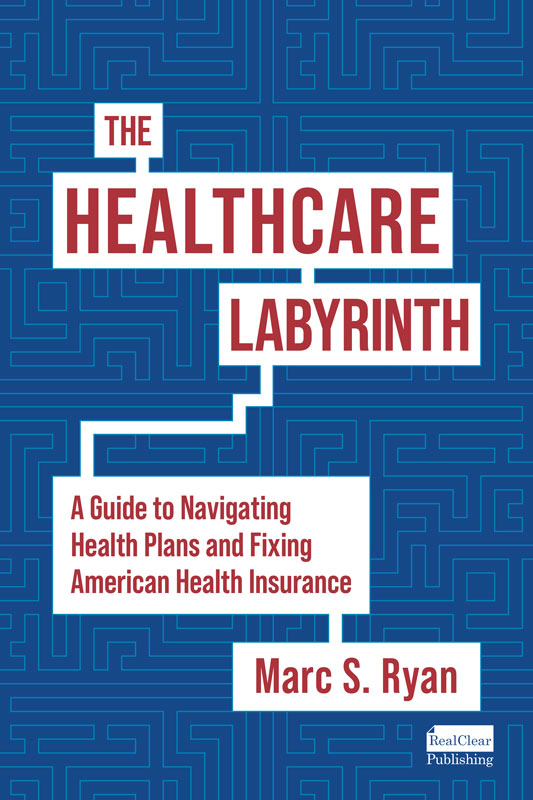We are approaching the Medicare Advantage (MA) open enrollment season in October and many are asking what will happen in the program in terms of benefits, products, and geography. It is a good question given all of the member impacts in 2025 when major players and others significantly contracted or exited the program.
MA is growing overall and that will remain the case
Notwithstanding the significant financial turmoil of MA plans of late, the MA program is growing. That will not change. Since January 2020, MA enrollment has grown from 23.93 million to 35.44 million in July 2025, a growth of 11.51 million. From January 2020 to January 2024, average growth was 10%, ranging from 6% to 11%. Growth from January 2024 to February 2025 did come down considerably to 4.4%. Since February, MA continues to grow at a healthy pace overall. Between February and July, almost 500,000 lives were added to the MA rolls.
We are likely in store for a rate of growth from 2025 to 2026 that is similar to 2024 to 2025. It is clear that the major retrenchment by MA plans in 2025 discussed below impacted overall growth. But the program will grow just the same given the significant advantages for plans and beneficiaries, even with further potential contraction. MA plans still are able to increase benefits and make products appealing for a few reasons:
- MA rate-setting largely is based on the antiquated and inefficient fee-for-service (FFS) program’s costs. This allows plans to deliver base services far more efficiently and pass savings on to members in additional benefits above and beyond FFS. These savings are mandated to be passed through to member benefits. Plans do a variety of things with the money:
- Reduce traditional program cost-sharing.
- Fill in huge FFS program benefit gaps (such as high costs of the inpatient benefit and the cap on covered days) that often bankrupt seniors and people with disabilities.
- Add numerous supplemental benefits not found in FFS.
- The Star quality bonus program rewards higher-performing plans with additional revenue in two ways to augment benefits even more.
- MA plans are improving outcomes (where FFS is failing miserably) and providing critical services, such as case and disease management.
The combination of the benefits and quality focus makes for a great value proposition. MA has become one of the greatest social safety nets for lower- and lower middle-income seniors. It can mean hundreds and sometimes thousands of dollars a year in additional support to fixed-income Americans. The value proposition means members flock to MA. And savvy Medicare beneficiaries are also moving to the highest-performing plans from lesser rated ones to get added benefits and more quality.
What MA retrenchment happened in 2025?
Generally, 2025 brought a reduction in some added benefits, a major contraction of the Preferred Provider Organization (PPO) product, and geographic exits or downsizing. While many plans pulled back, national MA plans struggled the most.
Big MA plan enrollment rose from 25.568 million in January 2024 to 26.348 million in February 2025, an increase of 780K or 3.1%. But this is down from 2.111 million or 9% from 2023 to 2024. What’s worse is Big Plan MA enrollment went up just 16,100 from December 2024 to February 2025 due to the contraction in benefits, products, and geographies for 2025 (see below for details).
Non-Big MA plan enrollment (including the prominent startups) actually grew at a healthy pace year over year – about 688K or 8.7% from January 2024 to February 2025. The growth compares favorably to the prior year-over-year statistics – about 563K or 7.7%. Non-Big MA grew about 406K during the enrollment season (about 5%), while Big MA was basically flat.
Big Plan MA enrollment represented about 76.38% in January 2024 and was about 75.41% as of February 2025, down by about 1%. Big MA enrollment continues to struggle, with Big MA penetration falling slightly more so far in 2025. Here are some contraction statistics, calculated by me and also from Oliver Wyman.
Humana and CVS Health’s Aetna did contract their benefits, products, and footprint rather dramatically. From January 2024 to February 2025, Humana dropped by 404K. Its benefit and product changes forced over 500,000 to move to new plans. Aetna dropped by 253K from January 2025 to February 2025. Its changes forced 450,000 to find new plans. Centene also contracted in the timeframe by 69K. United, too, reduced offerings in 2025, except not to the extent that Humana and Aetna did. About 250K had to find new plans, although United grew enrollment overall from 2024 to 2025. More broadly, over 18 organizations left MA in 2025, including a few prominent Blues.
Oliver Wyman also finds that approximately 1.3 million members had to find new PPO plans in 2025 because their plan was sunset, while about 530,000 members in HMOs had to find new plans. Firms put the number of people impacted by plan terminations or exits at between 1.8 million and 2 million enrollees. In the average year, the impact might be less than 100,000 people needing to change because their plan or product is going away.
Some additional stats about contraction overall (some calculated by me and some from the Better Medicare Alliance):
- The overall number of Plan Benefit Packages (PBPs or what you would think of as a benefit plan) dropped from 7,289 to 7,127, or 162 PBPs (-2.2%).
- For 2025, MA plans contracted both HMO and PPO to realign financials. MA plans terminated a net 134 HMO PBPs (down about 3.2%). PPO PBPs declined on a net base by 66 (down by about 2.5%).
- HMO enrollment grew by about 480K during the 2025 enrollment season, while PPOs contracted by about 58K.
- Average plans per county dropped from 9.0 to 8.1
- 1,615 counties saw reductions vs. 1,112 with increases; 72 counties lost all MA-Part D (MA-PD) coverage.
- Over 70% of urban counties saw plan losses.
- Big MA plans and others have begun ending commissions for enrollment in certain plans due to the financial struggles.
- The median out-of-pocket maximum increased by 8%.
- Supplemental benefits dropped considerably, including:
- Fitness benefits from 98% to 96% of plans
- In-home support services from 9% to 6% of plans
- Meals from 72% to 66% of plans
- Nutrition services from 40% to 29% of plans
- Over-the-counter benefits from 86% to 73% of plans
- Transportation from 36% to 29% of plans
This is not to say that plans did not invest in some new counties or expand in others. More importantly, plans seemed to have a major focus on Special Needs Plan (SNP) offerings. While individual MA plan offerings declined by 6.54% in 2025, SNP offerings increased 8.5% in 2025. From January 2024 to February 2025, SNPs grew to 7.553 million, a gain of about 646K or 9.35%. SNP enrollment grew about 264K in the 2025 enrollment season. SNPs have dominated monthly MA gains in 2025.
In the end, robust competition remained, $0 premiums prevailed, and most enrollees could find very favorable plans in terms of added benefits, reduced cost-sharing compared with FFS, and closure of some of the gaps in traditional Medicare. But 2025 represented some seismic changes for both plans and enrollees. As well, national plans had bigger negative impacts than the rest of the MA plans. The rest of the MA world gained in terms of market share ever so slightly.
What is in store for 2026?
While we won’t know for sure the full magntitude of contraction before open enrollment in October, word will begin to leak out about changes after broker training sessions, plan marketing and commission announcements, and investor guidance. Some analysts are speculating that contraction of benefits, products, and geographies could be robust again this year. But will it be as big as 2025?
We know that United has already said it will seek to shed more than 600,000 lives in 2026 by ending unprofitable PBPs.
CVS Health’s Aetna reported better financial news after its pullback in the MA market, but it is by no means out of the woods yet. Aetna announced it will end nearly 90 Medicare Advantage PBPs across 34 states in 2026. Most are PPOs.
Humana has also improved financials with its pullback. Elevance Health has broadly pulled back on marketing, including commission payments. Centene and Molina will see major impacts in Medicaid and the Exchanges over time. So, it is fair to say that some additional benefit, product, and footprint paring will continue even for these plans.
To get a feel for potential disruption in 2026, I considered contraction announcements already. Well over 600,000 would have to change plans in 2026. I calculated the ratio of big-plan-membership impacts to overall-MA impacts for 2025. If the ratio remains the same in 2026, just over 1 million members would have to change plans again in 2026. And that is with little gudiance yet from other big plans. So, the number is likely to rise.
How big the impact is to enrollees in 2026 may depend on a number of things:
- The 2026 rate hike will be over 5% even with the last phase in of the v28 risk model. But we are seeing major trend in MA. How did plans evaluate the rate increase against expected risk and utilization when designing 2026 benefits and products?
- Star ratings for 2025 were down for a third year in a row. The 2025 Star ratings are used for rate-setting and quality bonus payments for 2026. Those plans that saw greater Star drops are disadvantaged against others and might have had to contract more.
- Are MA plans also being more conservative or at least less adventurous due to the huge potential extrapolation penalties that could arise beginning soon due to 100% Risk Adjustment Data Validation (RADV) audits?
- The Part D cost-sharing changes from the Inflation Reduction Act (IRA) continue to roll out and impact plans due to surging drug utilization and prices. MA plans have eaten a great deal of the cost hikes on the Part D side by massaging or reducing other benefits on the Part C side. The Part D cost hikes are factored into product and footprint decisions on the Part C side.
- With the reductions in the special standalone Part D (PDP) premium stabilization program in 2026 as well as spiking Medicare Supplement premiums, will more seniors and people with disabilities decide to abandon the traditional program in favor of MA? What is the risk profile of these folks and was that taken into consideration by MA plans as well in 2026 benefit and bid submissions?
- Generally, we would expect the continuation of and more commission reductions for specific products, such as PPOs. This will impact enrollment uptake in 2026 as well.
- Rural hospitals continue to demand high rates and are terminating MA plans. This might have led to contraction in rural markets for 2026.
I do not expect the enrollee impacts to reach what we saw in 2025. But we already see big contraction announcements by United and Aetna. The over 600,000 target reduction in membership from United is already about a third of the contraction seen in 2025. So, we can say the contraction in benefits, products, and footprint will again be sizeable. We will know how big very soon.
#medicareadvantage #healthplans #margins #enrollment #marketing
— Marc S. Ryan





